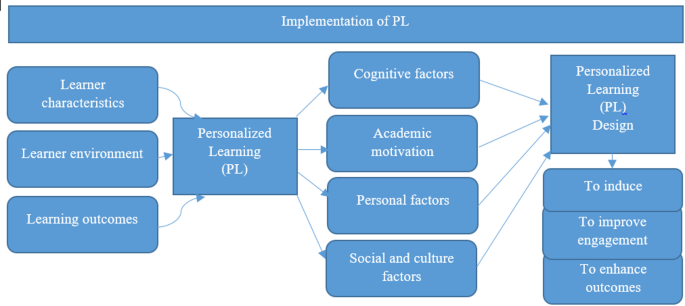Legislative Initiatives on Commercial Driver Proficiency and Sustainable Development Goals
A report on recent legislative actions in Wyoming concerning the enforcement of English proficiency standards for commercial vehicle operators, analyzed through the framework of the United Nations Sustainable Development Goals (SDGs). The initiative reflects a growing trend among U.S. states, including Arkansas and Oklahoma, to address transportation safety and labor standards.
Aligning State-Level Enforcement with SDG 3: Good Health and Well-being
The primary impetus for enforcing English proficiency regulations is the direct impact on public safety, a core component of SDG 3, particularly Target 3.6, which aims to halve the number of global deaths and injuries from road traffic accidents. Effective communication is deemed essential for ensuring safe transportation systems.
Rationale for Enhanced Enforcement
The push for stricter enforcement, championed by organizations such as the Owner-Operator Independent Drivers Association (OOIDA), is based on existing federal regulations. These rules mandate that commercial drivers must be able to:
- Understand highway traffic signs and signals in English.
- Converse with the general public and respond to official inquiries.
- Make entries on reports and records.
Following a petition from OOIDA and a presidential executive order, the Commercial Vehicle Safety Alliance (CVSA) reinstated the out-of-service penalty for drivers non-compliant with this standard.
Statistical Overview of Non-Compliance in Wyoming
Data presented to the Wyoming legislative committee underscores the scale of the issue and its potential risk to public health and safety. The Wyoming Highway Patrol reported a significant increase in enforcement actions, directly contributing to the goals of safer road infrastructure.
- In the year prior to the renewed focus, 379 English-proficiency violations were recorded during inspections.
- From June 25 to October 15 of the current year, 497 non-English-proficient drivers were placed out of service.
Economic and Social Implications: A Focus on SDG 8 and SDG 10
The proposed legislation carries significant implications for SDG 8 (Decent Work and Economic Growth) and SDG 10 (Reduced Inequalities). While aiming to create a safer work environment (Target 8.8), the measures also introduce economic penalties that may disproportionately affect certain segments of the workforce.
Proposed Legislative Measures and Economic Impact
The draft bill debated by the Transportation, Highways and Military Affairs Committee outlined a clear penalty structure, which lawmakers opted to retain to ensure compliance. These financial penalties directly impact the economic conditions of individual drivers.
- A $1,000 civil fine for an initial violation.
- A $2,000 fine and/or up to 90 days of incarceration for drivers caught operating while under an out-of-service order for this violation.
Accountability Framework: Drivers vs. Motor Carriers
A key debate centered on the distribution of accountability, a matter relevant to both SDG 8, concerning the responsibilities of employers, and SDG 10, regarding equitable application of the law. The committee ultimately revised the bill’s focus.
- The initial draft included penalties for the motor carrier and cargo owner, holding the entire supply chain accountable.
- Following testimony from the Wyoming Department of Transportation (WYDOT) and the Highway Patrol, who noted that carrier penalties are being addressed at the federal level, the committee removed these provisions.
- The revised legislation focuses exclusively on driver accountability, with state-level penalties to be administered by county sheriffs and local police departments.
Institutional Framework and Policy Coherence for SDG 16
The legislative process in Wyoming exemplifies efforts to build effective, accountable, and transparent institutions, as outlined in SDG 16 (Peace, Justice and Strong Institutions). The collaboration between lawmakers, state agencies, and industry stakeholders highlights a commitment to robust governance.
Harmonization with Federal Regulations
To ensure policy coherence and avoid legal conflicts that could jeopardize federal funding, the committee made a critical amendment to the bill. This decision supports the development of effective and coordinated governance structures.
- The original draft contained a state-specific definition of English proficiency.
- Upon the recommendation of the Wyoming Trucking Association and other stakeholders, this definition was removed.
- The final bill will directly reference the existing federal rule, ensuring alignment and simplifying enforcement.
The committee voted 11-1 to advance the legislation for consideration in the 2026 regular session, signaling a strong institutional commitment to addressing this intersection of public safety and economic regulation.
Analysis of Sustainable Development Goals in the Article
-
Which SDGs are addressed or connected to the issues highlighted in the article?
-
SDG 8: Decent Work and Economic Growth
The article discusses regulations that directly impact the working conditions and employment of professional truck drivers. The enforcement of English proficiency standards is framed as a measure to ensure a safe and secure working environment, which is a key aspect of decent work.
-
SDG 9: Industry, Innovation and Infrastructure
The trucking industry is a critical component of transportation infrastructure. The regulations discussed aim to improve the safety, reliability, and quality of this infrastructure by ensuring that operators can comply with traffic laws and communicate effectively, thereby supporting economic development.
-
SDG 11: Sustainable Cities and Communities
A central theme of the article is road safety. The requirement for truck drivers to understand highway signs and signals in English is directly linked to making transport systems safer for all road users, a core component of this goal.
-
SDG 16: Peace, Justice and Strong Institutions
The article details the legislative and enforcement process involving state lawmakers, the Wyoming Highway Patrol, and federal bodies like the Commercial Vehicle Safety Alliance (CVSA). It highlights the development of effective and accountable institutions that create and enforce laws, such as the bill being drafted in Wyoming to penalize non-compliance.
-
-
What specific targets under those SDGs can be identified based on the article’s content?
-
Target 8.8: Protect labour rights and promote safe and secure working environments for all workers.
The push by the Owner-Operator Independent Drivers Association (OOIDA) and lawmakers to enforce English proficiency regulations is presented as a safety measure. This aims to create a safer working environment for truck drivers and the public by ensuring drivers can understand critical road information and communicate with officials.
-
Target 11.2: By 2030, provide access to safe, affordable, accessible and sustainable transport systems for all, improving road safety.
The article’s focus is on improving road safety. The federal law requiring drivers to “understand highway traffic signs and signals in the English language” and the reinstatement of the out-of-service penalty for non-compliance are direct actions aimed at achieving this target.
-
Target 16.6: Develop effective, accountable and transparent institutions at all levels.
The article describes the actions of multiple institutions. The CVSA voted to reinstate a penalty, a Wyoming legislative committee is drafting a bill, and the Wyoming Highway Patrol is enforcing the rule. The discussion about mirroring federal language to avoid loss of funding and the debate over penalties for drivers versus carriers show the process of developing accountable and effective governance.
-
-
Are there any indicators mentioned or implied in the article that can be used to measure progress towards the identified targets?
-
Indicators for Road Safety and Enforcement (Targets 8.8 and 11.2)
The article provides specific quantitative data that can serve as indicators:
- The number of English-proficiency violations noted on inspections (379 in the previous year).
- The number of non-compliant drivers placed out of service (497 from June 25 to Oct. 15).
- The monetary value of penalties proposed for violations (a $1,000 civil fine for drivers, and $2,000 for operating while out of service).
These figures directly measure the level of non-compliance and the intensity of enforcement actions, which are proxies for progress toward a safer transport environment.
-
Indicators for Institutional Effectiveness (Target 16.6)
The article implies indicators related to the legislative process:
- The drafting and consideration of state-level legislation to enforce federal regulations.
- The committee vote (11-1) to advance the legislation for consideration in the 2026 session, indicating progress in the institutional process of law-making.
-
-
Create a table with three columns titled ‘SDGs, Targets and Indicators” to present the findings from analyzing the article.
SDGs Targets Indicators SDG 8: Decent Work and Economic Growth 8.8: Promote safe and secure working environments for all workers. - Number of drivers placed out of service for non-compliance (497 in 112 days).
- Number of English-proficiency violations recorded during inspections (379 in the previous year).
SDG 11: Sustainable Cities and Communities 11.2: Improve road safety. - Reinstatement of the out-of-service penalty for English-proficiency violations.
- Proposed civil fine for non-compliant drivers ($1,000).
SDG 16: Peace, Justice and Strong Institutions 16.6: Develop effective, accountable and transparent institutions at all levels. - Introduction of state-level legislation to enforce federal regulations.
- Legislative committee vote (11-1) to advance the bill.
Source: landline.media







